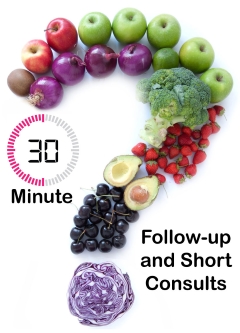DrCarney.com Blog
How to Limit Your Exposure to Arsenic in Rice
The Food and Drug Administration (FDA) says rice is the leading cause of inorganic arsenic exposure for infants in the United States. "Relative to body weight, rice intake for infants, primarily through infant rice cereal, is about three times greater than for adults. Moreover, national intake data show that people consume the most rice (relative to their weight) at approximately 8 months of age." Exposure to inorganic arsenic for infants and pregnant women can result in decreased intellectual function in babies.
It is not only babies, however, who face risks from exposure to inorganic arsenic. My article, "Arsenic in Rice - Should We be Concerned?," has a long list of health concerns associated with consuming inorganic arsenic. Many forms of cancer are among the diseases linked to this toxic substance.
How to Eat Less Arsenic
The FDA offers two suggestions for reducing exposure to inorganic arsenic that would be wise for all of us to follow. First, the FDA suggests varying our intake of whole grains to include things like oats, barley, and — after six months of age — wheat. I'd also recommend experimenting with grain-like seeds such as quinoa, amaranth, and millet as replacements for rice. Second, the method of cooking rice can significantly affect how much arsenic ultimately makes it onto our dinner plate. In the US, rice is typically cooked in a grain-to-water ratio that allows all of the water to be absorbed by the end of the cooking process. However, there is another way to cook rice that can reduce inorganic arsenic exposure by 40 to 60 percent.
The following video demonstrates cooking rice in a large amount of water (the FDA suggests six to 10 parts water to one part rice), and then draining the excess water and much of the arsenic along with it. I think Kitchen Daddy does a fantastic job showing us this method, but here's my caveat: it's not necessary to add salt to the cooking water. (If you need salt, just sprinkle a little on at the table, and you'll minimize your sodium intake.) Also, while Kitchen Daddy and I agree on the delicious taste of brown rice, we seem to disagree about the place of animal products and oil in the diet. With that in mind though, this video is super helpful for learning how to make fluffy brown rice while reducing arsenic intake.
To learn more about reducing our exposure to inorganic arsenic in rice, please read my article on the subject of Arsenic in Rice. In it, I've collected the recommendations of doctors Michael Greger, Joel Fuhrman, and John McDougall plus the advice of registered dietitian Jeff Novick on how we can guard ourselves against arsenic overload.
Additional Information:
(1) What's in Your Holiday Turkey Besides Stuffing?
(2) Use Caution with Seaweed Consumption
(3) Dr. Michael Greger Reviews the Paleo Diet
Scroll Down Page to Leave Comments

Starch-Smart Bloggers
We welcome Member Bloggers and make it easy to share your blogs with your friends. Simply sign up for a free membership at DrCarney.com/community.
Thirty Minute Phone Consult with Dr. Carney

Telephone Food Coaching Sessions with Linda Carney MD
Due to demand for nutritional advice, Dr. Carney's offers Starch-Smart® System "Dietary Care Extraordinaire" Food Coaching telephone sessions. The first sessions is always one hour. Subsequent sessions can be thirty minutes or one hour:
Click Here For 30 Minute Food Coaching Session
Please Note: Food Coaching sessions are not medical appointments and are not intended to replace your own physician. No tests will be ordered and no prescriptions will be provided.
When you subscribe to the blog, we will send you an e-mail when there are new updates on the site so you wouldn't miss them.




